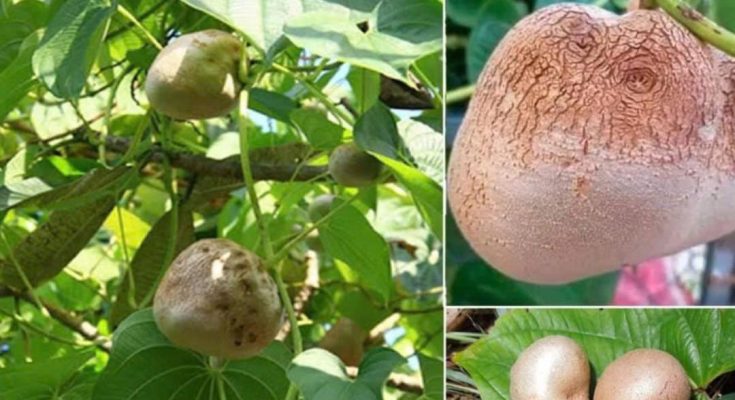The vine potato, also known as the air potato, is a unique and versatile tuber that has captivated the attention of many. Belonging to the yam family (Dioscoreaceae), this plant is native to Asia and sub-Saharan Africa, where it holds cultural, culinary, and medicinal significance.

What is the Vine Potato?
The vine potato, or air potato, is a climbing plant that produces bulbils resembling small potatoes above ground. These bulbils are the plant’s most distinguishing feature and serve multiple purposes in the regions where the vine potato thrives. Its ability to grow in various climates and environments makes it a fascinating member of the yam family.
Native to tropical and subtropical regions, the vine potato has long been a staple for communities in Asia and sub-Saharan Africa. People in these areas have relied on its unique properties for generations, incorporating it into their diets and using it for traditional healing practices.
Versatility in Food and Medicine
The vine potato’s versatility is one of its most remarkable characteristics. The bulbils can be cooked and eaten, offering a source of nutrition for many households. In some regions, they are boiled, fried, or mashed into various dishes, much like regular potatoes or other yams.
In addition to its culinary uses, the vine potato is celebrated for its role in traditional medicine. Many cultures believe the plant possesses health benefits, utilizing its parts to treat ailments such as inflammation, infections, and digestive issues. Its longstanding use in traditional remedies underscores its importance in the communities where it grows.
Cultural Significance and Practical Uses
Beyond its nutritional and medicinal applications, the vine potato is deeply ingrained in the cultural practices of its native regions. It is often featured in folklore and traditional agricultural rituals. For some communities, the plant symbolizes resilience and abundance due to its ability to thrive in diverse conditions.
The vine potato’s climbing nature also makes it a popular choice for landscaping. Its vines can be used to cover trellises and fences, providing shade and adding greenery to gardens and outdoor spaces. This dual functionality—offering both aesthetic appeal and practical value—further highlights its versatility.
A Plant Worth Recognizing
The vine potato’s unique combination of practical, nutritional, and cultural benefits has earned it a special place in the regions where it originates. Whether used as a food source, a natural remedy, or a landscaping feature, this tuber is much more than meets the eye.
As awareness of plants like the vine potato grows, its fascinating history and many uses continue to capture the imagination of those who encounter it.



